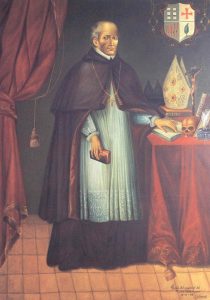 Vasco de Quiroga (1470-78–1565) was a lawyer and judge from Madrigal de las Altas Torres, Castile, in today's Spain. He was appointed by the Spanish crown to serve on the Second Audiencia, the early governing body in what would become New Spain. He did so from 1531 until April of 1535.
In Mexico City, he's likely most famous for setting up a hospital and town in today's Pueblo de Santa Fe. He's arguably more famous for work he did thereafter in Michoacán, the state to the West of Mexico City.
Santa Fe became a sort of working model to be repeated in numerous small indigenous towns there where Vasco de Quiroga created many of his so-called "Indian Republics." These were generally centered around a hospital complex. Each town then focused on a trade or craft and these were intended to support emerging Christian values that Vasco de Quiroga based on principles he'd studied in Thomas More's Utopia, only then newly published. Some of those same towns are still focused on their individual craft-industries even to this day.
Vasco de Quiroga eventually became the first Bishop of Michoacan, although he'd never been ordained a priest. He's still recognized by the Church for his contribution to the protection of the Indigenous peoples of Mexico.
Vasco de Quiroga (1470-78–1565) was a lawyer and judge from Madrigal de las Altas Torres, Castile, in today's Spain. He was appointed by the Spanish crown to serve on the Second Audiencia, the early governing body in what would become New Spain. He did so from 1531 until April of 1535.
In Mexico City, he's likely most famous for setting up a hospital and town in today's Pueblo de Santa Fe. He's arguably more famous for work he did thereafter in Michoacán, the state to the West of Mexico City.
Santa Fe became a sort of working model to be repeated in numerous small indigenous towns there where Vasco de Quiroga created many of his so-called "Indian Republics." These were generally centered around a hospital complex. Each town then focused on a trade or craft and these were intended to support emerging Christian values that Vasco de Quiroga based on principles he'd studied in Thomas More's Utopia, only then newly published. Some of those same towns are still focused on their individual craft-industries even to this day.
Vasco de Quiroga eventually became the first Bishop of Michoacan, although he'd never been ordained a priest. He's still recognized by the Church for his contribution to the protection of the Indigenous peoples of Mexico.

Historically the space is a place won by the community.
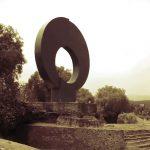
A broadly symbolic work on the Friendship Sculptural Route...
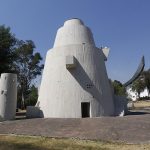
One of the most architectural of works in the Route of Friendship...
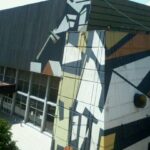
One of the City's most important center's for music and performing arts...
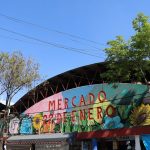
A great neighborhood market in the south of the city...